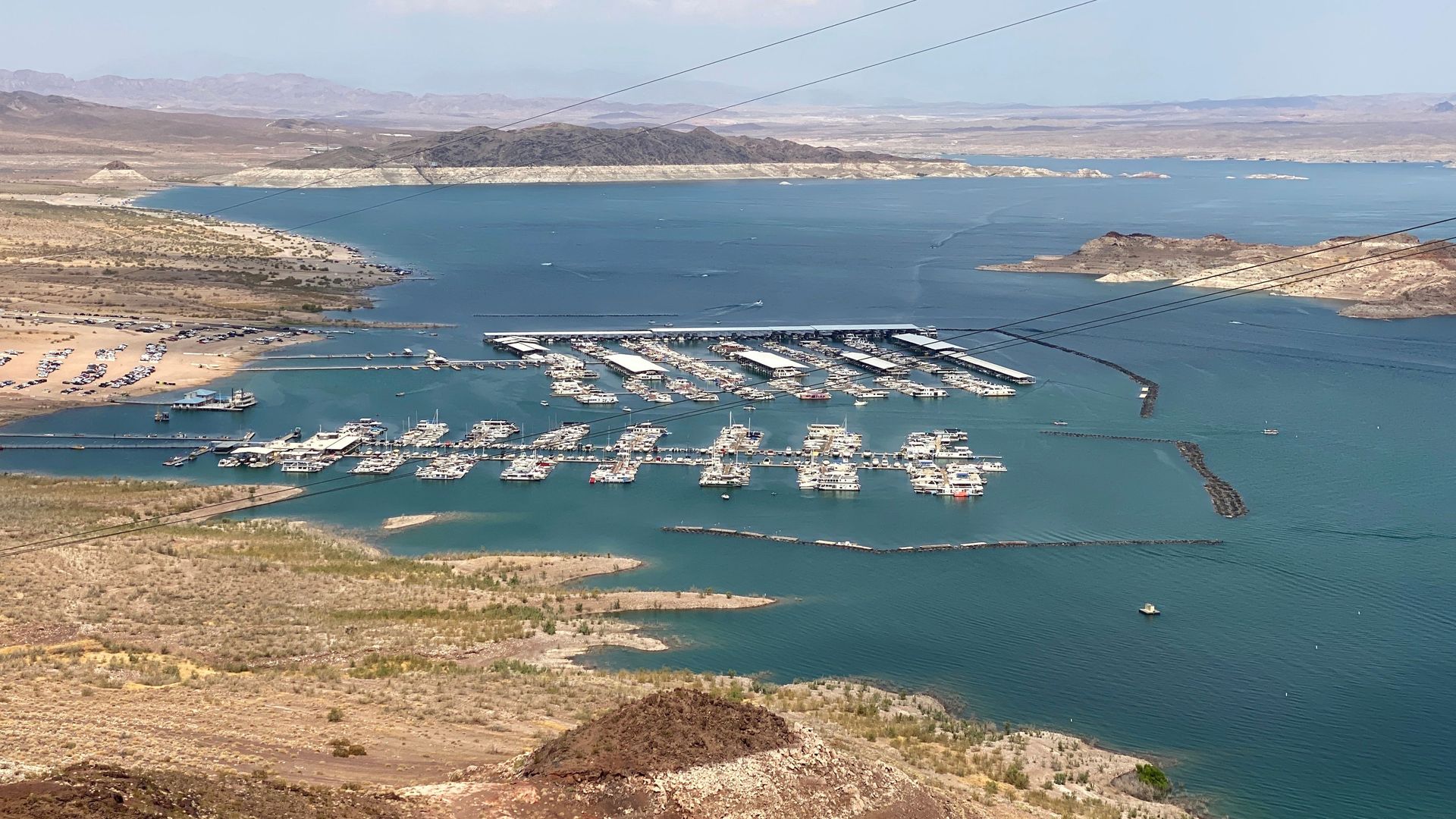Lake Mead falls to lowest level since 1930s amid worsening drought

- Andrew Freedman, author ofAxios Generate

Lake Mead marina is pictured, south of Las Vegas, Nevada, on August 23, 2020. (Daniel Slim/AFP via Getty Images)
Amid an intensifying drought, Lake Mead in Nevada, the nation's largest reservoir by volume, reached its lowest level since the 1930s late Wednesday.
Why it matters: The record low is due to a combination of years of punishing drought that's worsening across the Southwest, as well as challenges in managing water resources for a burgeoning population.
- The record-low reading, as well as expected subsequent drops in the lake, are almost certain to trigger a federal "water shortage" declaration later this summer, which would set off cuts in water allocations to several states.
Between the lines: Lake Mead, which sits along the border between Nevada and Arizona, is part of the vast Colorado River basin that provides water for agriculture and human consumption to seven states, and also generates electricity at the massive Hoover Dam.
- Cuts in water supplies, to be determined in August, would affect the region's farmers, residents of sprawling cities such as Las Vegas, and others.
- Already, the Hoover Dam is operating below its maximum capacity, and it could see a further reduction in power generation as the summer goes on.
Details: Years of unusually dry conditions along with a growing population and water resource decisions have helped lead to the situation.
- As of Thursday morning, the Bureau of Reclamation showed Lake Mead's hourly water levels dipped to 1,071.48 feet Thursday, and remained below the previous record set on July 1, 2016.
- A spokesperson for the Interior Department agency said the record-low level was first reached at about 11 p.m. on Wednesday, when the reading dropped to 1071.56 feet above sea level. Water levels this low have not been seen since the reservoir was originally filled in 1937.
- Currently, the Southwest is experiencing a deepening drought that is the most expansive and severe such episode of this century. In Arizona, for example, 86.5% of the state is currently classified as experiencing "extreme" to "exceptional" drought — the two worst categories on the U.S. Drought Monitor.
Of note: Historical climate information gleaned from tree rings and other sources shows that the region is currently in a longer-term "megadrought" that is the second-worst such event in at least 1,200 years.
- By elevating temperatures and altering weather patterns, human-driven climate change is making the drought both more likely to occur and more severe.
Threat level: The ongoing drought is likely to continue to intensify and expand across the West and Southwest throughout the summer, putting a strain on power resources and priming the region for a severe wildfire season.
- Already, Arizona has seen large blazes, and firefighters in California are anticipating large fires to begin at least two months earlier than in an average season.
- A water shortage declaration will be made if the Bureau of Reclamation's August projections show the lake level remaining below 1,075 feet at the start of 2022, according to the Las Vegas Review-Journal.
Go deeper: Southwest's new climate peril